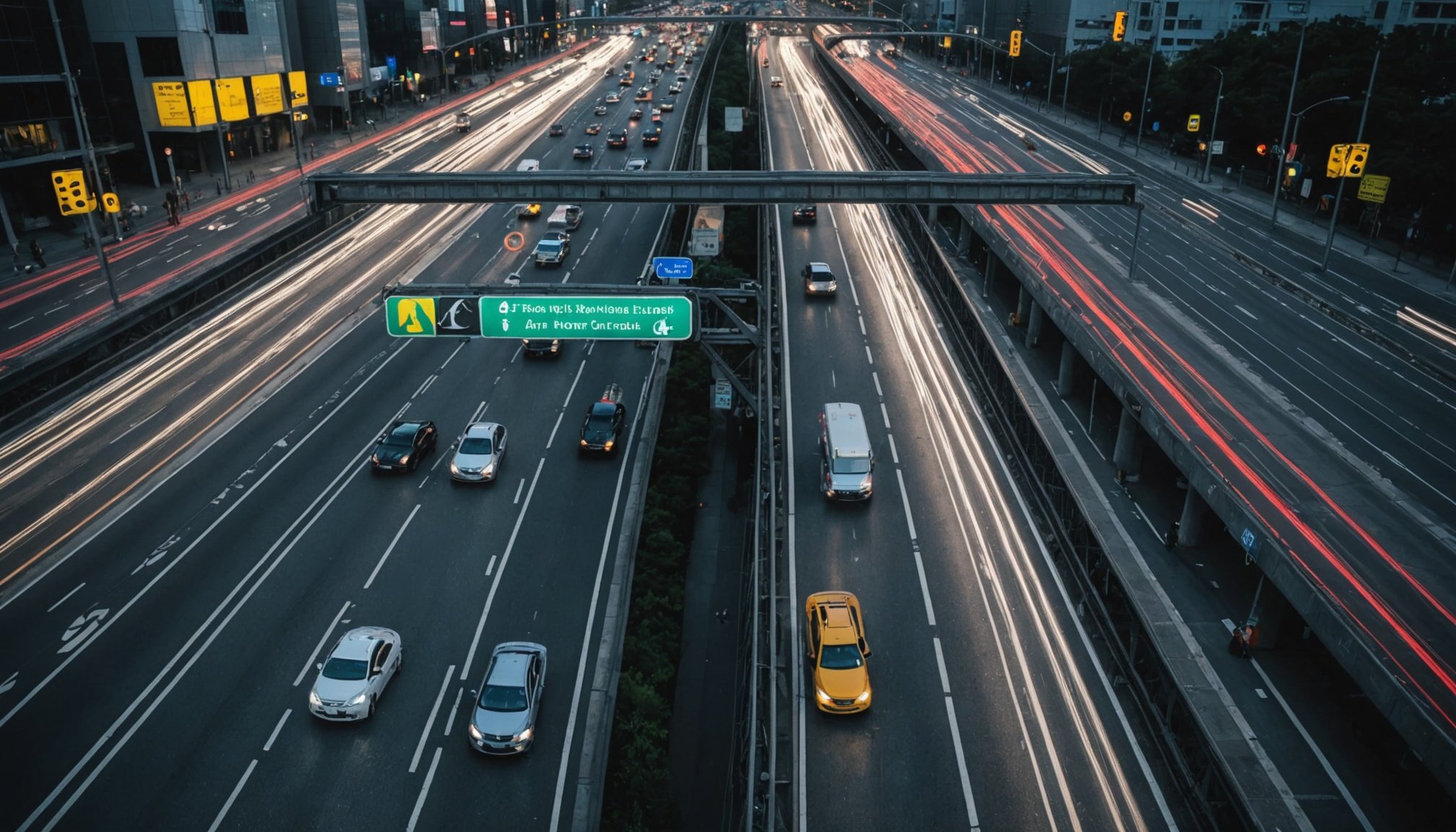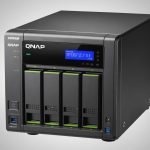Revolutionizing Real-Time Traffic Monitoring: The Power of Edge AI Integration
In the era of smart cities and interconnected devices, managing traffic efficiently has become a critical challenge. The integration of edge AI (Artificial Intelligence) into traffic monitoring systems is transforming the way cities handle traffic flow, congestion, and safety. Here’s a deep dive into how edge AI is revolutionizing real-time traffic monitoring.
Understanding Edge AI and Its Role in Traffic Management
Edge AI refers to the deployment of AI algorithms directly on edge devices, such as traffic cameras, sensors, and IoT devices, enabling real-time data processing and decision-making without relying heavily on cloud resources. This approach is particularly beneficial for applications that require immediate responses, such as traffic management.
How Edge AI Works in Traffic Monitoring
Edge AI in traffic monitoring involves several key components:
- Real-Time Data Processing: Edge devices process data locally, reducing latency and bandwidth usage. For instance, traffic cameras equipped with edge AI can analyze video feeds in real-time to detect traffic congestion, accidents, or other anomalies[5|.
- Predictive Analytics: AI models predict traffic patterns based on historical and real-time data, allowing for proactive measures to manage traffic flow. This can include adjusting traffic light timings or diverting traffic to less congested routes[1|.
- Decision Making: Edge AI enables devices to make decisions autonomously. For example, an autonomous traffic management system can adjust traffic signals in real-time based on the current traffic conditions, minimizing congestion and improving traffic flow.
Key Benefits of Edge AI in Traffic Monitoring
The integration of edge AI into traffic monitoring systems offers several significant benefits:
Real-Time Insights
Edge AI provides immediate responses to changing traffic conditions. Here are some ways this benefits traffic management:
- Traffic Flow Optimization: Real-time data analysis allows for the optimization of traffic light timings, reducing congestion and improving overall traffic flow.
- Incident Detection: Edge AI can quickly detect accidents or other incidents, enabling swift response times and minimizing the impact on traffic.
- Pedestrian Safety: By analyzing real-time data from sensors and cameras, edge AI can enhance pedestrian safety by detecting potential hazards and alerting authorities.
Efficiency and Cost Savings
Edge AI reduces the need for extensive cloud resources, which can lead to significant cost savings and improved efficiency:
- Reduced Bandwidth Usage: Processing data locally reduces the amount of data that needs to be transmitted to cloud servers, lowering operational costs.
- Energy Efficiency: Edge devices can be optimized to consume less power, especially when using AI algorithms that manage power consumption based on the workload[2|.
- Lower Latency: By processing data at the edge, latency is significantly reduced, allowing for faster decision-making and response times.
Enhanced Security and Privacy
Edge AI also addresses critical concerns related to security and privacy:
- Data Privacy: Processing data locally minimizes the risk of data exposure, as sensitive information is not transmitted to cloud servers. This is particularly important in sectors where privacy is paramount[4|.
- Security Threat Detection: AI algorithms can detect potential security threats in real-time, identifying anomalies and breaches before they become serious problems.
Real-World Applications and Use Cases
Several cities and organizations are already leveraging edge AI for traffic management, with impressive results:
Smart Cities
Cities like Singapore and Copenhagen are using AI-driven solutions to monitor and manage traffic:
- Traffic Management Systems: These systems use edge AI to analyze data from sensors and cameras, optimizing traffic light timings and reducing congestion.
- Air Quality Monitoring: Edge AI can also monitor air quality levels in real-time, enabling cities to implement strategies for reducing pollution.
Autonomous Vehicles
Autonomous vehicles rely heavily on edge AI for real-time data analysis and decision-making:
- Real-Time Object Detection: Edge AI enables vehicles to process data from cameras, LiDAR, radar, and other sensors directly on the vehicle, making split-second decisions to identify obstacles, pedestrians, and other vehicles[4|.
- Lane Detection and Traffic Sign Recognition: Edge AI is crucial for tasks such as lane detection, traffic sign recognition, and collision avoidance, allowing vehicles to react instantly to changing road conditions.
Challenges and Future Directions
While edge AI offers numerous benefits, there are also challenges to consider:
Technical Challenges
- Data Integration: Integrating data from multiple IoT sources can be complex. Solutions like Thinkz’s Universal IoT Protocol Collector help gather data from various protocols seamlessly[3|.
- Model Optimization: AI models need to be optimized for edge devices, which often have limited computational resources. Techniques like model compression, pruning, and quantization are used to shrink AI models to fit within these constraints.
Scalability and Adoption
- Infrastructure: Widespread adoption of edge AI requires robust infrastructure, including edge devices and reliable connectivity.
- Regulatory Frameworks: Clear regulatory frameworks are necessary to ensure the secure and ethical use of edge AI in traffic management.
Practical Insights and Actionable Advice
For cities and organizations looking to implement edge AI in traffic monitoring, here are some practical insights and actionable advice:
Start with a Clear Strategy
- Define Objectives: Clearly define what you want to achieve with edge AI in traffic management. This could include reducing congestion, improving safety, or enhancing air quality.
- Assess Infrastructure: Evaluate your existing infrastructure and identify where edge devices can be integrated to maximize benefits.
Choose the Right Technology
- Select Appropriate Edge Devices: Choose edge devices that are capable of handling the computational demands of AI models.
- Optimize AI Models: Ensure that AI models are optimized for edge devices to maintain performance and efficiency.
Ensure Data Quality and Security
- Data Verification: Use AI algorithms to verify the quality and accuracy of the data collected from IoT devices.
- Implement Robust Security Measures: Ensure that edge devices and the data they process are secure, using measures such as encryption and anomaly detection.
The integration of edge AI into traffic monitoring systems is a game-changer for smart cities and traffic management. By providing real-time insights, enhancing efficiency, and addressing security and privacy concerns, edge AI is revolutionizing the way we manage traffic. As this technology continues to evolve, it holds the promise of making our cities smarter, safer, and more efficient.
Table: Comparing Edge AI and Cloud Computing for Traffic Management
| Feature | Edge AI | Cloud Computing |
|---|---|---|
| Latency | Low latency due to local processing | Higher latency due to data transmission to cloud servers |
| Bandwidth Usage | Reduced bandwidth usage | Higher bandwidth usage |
| Real-Time Decision Making | Enables real-time decision making | Delays in decision making due to cloud processing |
| Data Privacy | Processes data locally, enhancing privacy | Data transmitted to cloud servers, higher risk of exposure |
| Energy Efficiency | Optimizes power consumption based on workload | Typically more energy-intensive |
| Scalability | Scalable with the right infrastructure | Scalable but may require significant cloud resources |
| Security | Real-time threat detection and response | May have delays in detecting and responding to security threats |
Detailed Bullet Point List: Key Applications of Edge AI in Traffic Management
-
Traffic Flow Optimization:
-
Analyze real-time data from sensors and cameras to optimize traffic light timings.
-
Predict traffic patterns to proactively manage traffic flow.
-
Adjust traffic signals in real-time based on current conditions.
-
Incident Detection and Response:
-
Quickly detect accidents or other incidents using real-time data analysis.
-
Alert authorities and emergency services promptly.
-
Minimize the impact on traffic by diverting vehicles to less congested routes.
-
Pedestrian Safety:
-
Detect potential hazards such as pedestrians stepping into the road.
-
Alert drivers and pedestrians through real-time notifications.
-
Enhance safety measures by optimizing traffic flow around pedestrian areas.
-
Autonomous Vehicles:
-
Process data from cameras, LiDAR, radar, and other sensors directly on the vehicle.
-
Make split-second decisions to identify obstacles, pedestrians, and other vehicles.
-
Enable real-time object detection, lane detection, and traffic sign recognition.
-
Air Quality Monitoring:
-
Monitor air quality levels in real-time using edge AI.
-
Implement strategies for reducing pollution based on real-time data.
-
Provide citizens with real-time information about air quality to help them make informed decisions.
Quotes and Insights from Experts
- “The integration of AI into 5G technology forms the backbone of efficient network resource allocation. By processing vast datasets, AI algorithms predict traffic patterns and allocate resources dynamically, ensuring optimal data flow and minimizing congestion,” – Mischadohler.
- “Edge AI is revolutionizing edge computing by making devices faster, smarter, and more efficient. From real-time decision-making to improved energy efficiency and enhanced security, AI-powered edge devices are transforming industries like healthcare, manufacturing, and telecommunications,” – AITimeJournal.
- “Thinkz’s platform is built to integrate data from multiple IoT sources, process it in real-time, and deliver verified, actionable insights to its users. This real-time approach enhances the ability of city officials to optimize public services and improve urban life,” – Thinkz.
By embracing edge AI, cities can move towards a future where traffic management is not just efficient but also intelligent, responsive, and safe. As we continue to navigate the complexities of urban living, the power of edge AI integration in real-time traffic monitoring stands as a beacon of innovation and progress.






